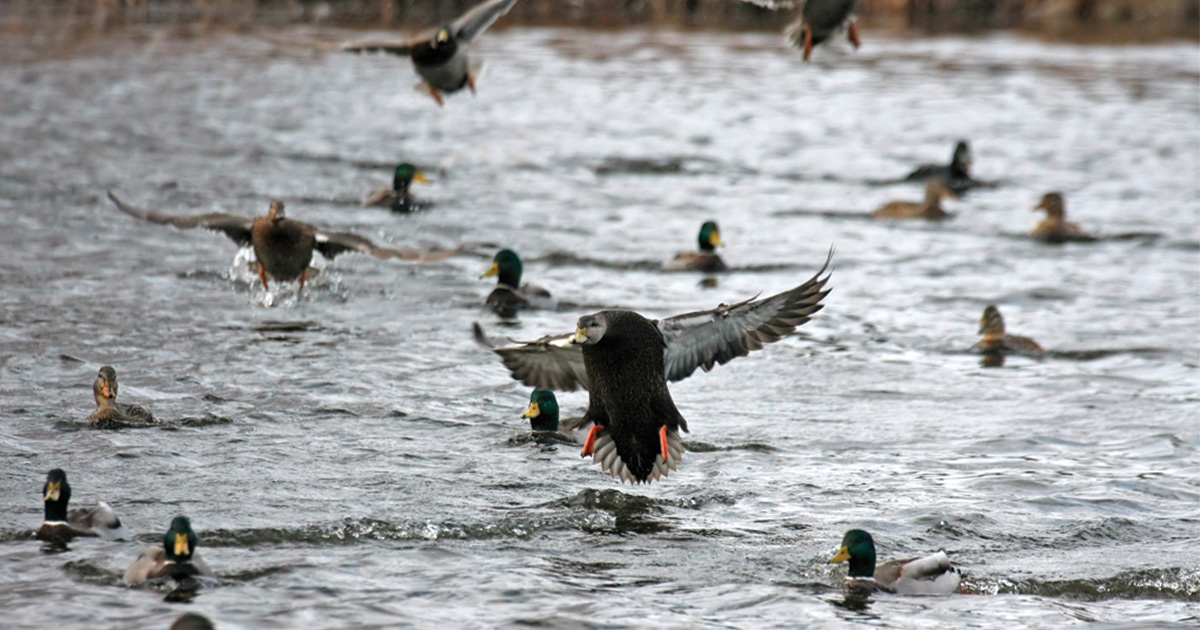Migration Alert: Water, Improved Habitat has North Atlantic States Poised for Strong Season
Oct. 3, 2023 – Atlantic Flyway – North Atlantic Preview
Oct. 3, 2023 – Atlantic Flyway – North Atlantic Preview

New England waterfowl hunters are poised to take advantage of something they haven’t had much of the past couple of seasons: water. In fact, many inland marshes have been quickly recharged by pounding rains this summer, leading to a smorgasbord of duck food, and plenty of young ducks to eat it.
“We had a historically wet summer in New England. Smaller ponds and ephemeral bodies of water are going to have more water in them. Wood ducks, and some of the smaller dabbling duck species should be using those areas,” explains Bri Benvenuti, Ducks Unlimited biologist in New Hampshire. “It’s like we’re living in a rainforest here, some of the goldenrod is six feet tall. The entire northeast was clobbered with a cold, wet summer and small beaver ponds that didn’t blow out should have plenty of ducks. The eastern breeding survey was overall good for most species and that gives us optimism for good numbers of younger birds coming down through the region.”
Benvenuti touched on the impact of Hurricane Lee and its cyclonic remnants, which impacted the northeast US and Canadian Maritime Provinces the second week of September. Many bird species including passerine songbirds hunkered down, which stalled migration progress. This could have temporarily impacted early migrant species of waterfowl as well.
Veteran waterman Captain Ruben Perez, guide and owner of East Coast Guide Service, concurs. “I expect a good season in the salt with sea ducks, and puddle ducks should be in good numbers as well due to the wet conditions,” Perez says.
“Too early for migration for the most part, just seeing local mallards, black ducks, and a few eiders. It looks to be a banner year given the numbers I’m seeing.”
Positive reports and optimism are being shared by waterfowlers up and down the New England coast.
“I saw groups of mallards and black ducks holding in the wetland inlets of lakes and ponds up in Maine while brook trout fishing,” explained Reilly McCue, owner of RPM Outdoors. “Down on the north shore of Massachusetts, there are plenty of green-winged teal and also a fair number of black ducks and mallards in the salt marshes. Out on the ocean all three species of scoters have made it out of the Boreal Forest and a sprinkling of common eider are also present.”
McCue, who was headed to Cape Cod to fish for albacore tuna, also mentioned Lake Champlain in Vermont was pretty quiet with what appeared to be mostly local birds and there was very little shooting during the youth season.
While hunters from Maine and on down the coast anxiously await the first waves of sea ducks and divers such as greater scaup to hit the Atlantic’s bays and estuaries later this fall, further inland to the west, the migration has picked up over the past ten days.
“Current habitat conditions vary by region,” explains Matt Wagner, DU biologist based in New York and Vermont. “Drought in some areas of Western New York has caused lower than normal water levels for wetlands, while other areas in this region have normal or increased water availability with the recent flooding events. Vegetation responses in these systems has been great this year from what I’ve seen.”
Wagner continues, “I’ve received reports of mallards, wood ducks, and teal showing up in good numbers but we’re really just starting to pick up birds. We’re seeing Canada geese arrive over the last two weeks and expect that to increase. Overall, resident nesting and brood rearing success seems to be high this year.”
Stay up to date with the latest migration information.